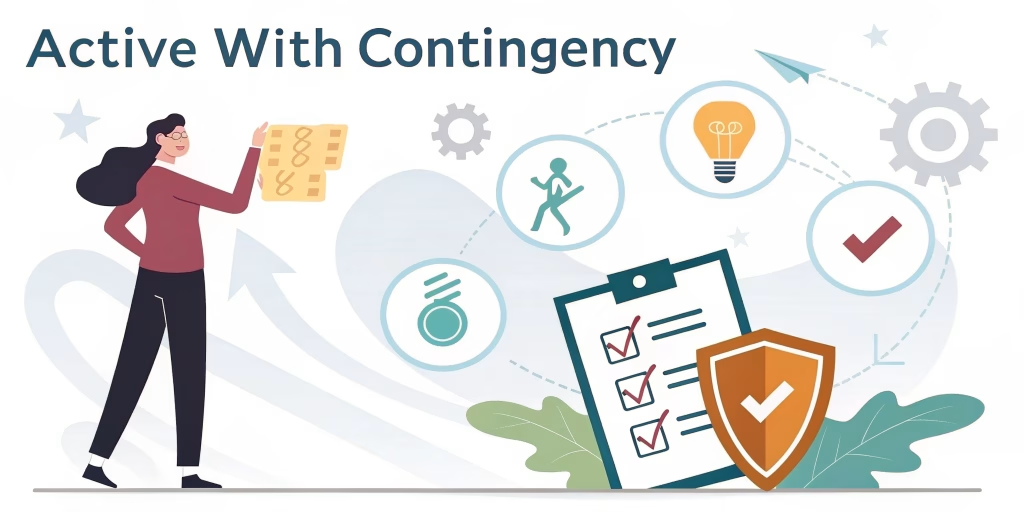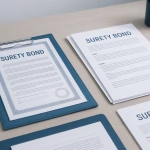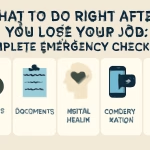Have you seen “Active with Contingency” on real estate listings? Do you know what it means? Let me explain it in simple words.
This guide helps anyone who wants to buy or sell property. You will learn about contingencies. You will see why they matter. You will feel more sure about real estate deals.
What Does “Contingent” Mean?
What does “contingent” mean in real estate? It means someone made an offer on a house. But the deal is not done yet. The buyer and seller must meet some rules first.
What does active with contingency mean? It means the house is still for sale. Other buyers can still make offers. But there is already one offer waiting.
Think of it like buying a used car. You say you will buy it if it passes a check. If the car fails the check, you can walk away. In real estate, these checks are called contingencies.
Types of Contingencies
There are many types of contingencies. They protect both buyers and sellers. Let me show you the main ones.
Home Inspection Contingency
A home inspection lets the buyer check the house. They look for problems that need fixing. If they find big issues, they can ask for repairs. They can also cancel the deal.
Why this matters: A study shows 80% of buyers with this rule got better deals. They avoided costly surprises later.
Real example: One buyer found water damage during inspection. They used their rule to get a lower price. This covered the repair costs.
Financing Contingency
A financing rule means the deal only works if the buyer gets a loan. If the bank says no, the buyer can leave without trouble.
Why this matters: About 35% of home contracts have this rule. It protects buyers from money problems.
Real example: A family’s mortgage got denied. Their financing rule saved them from being stuck in a bad contract.
Appraisal Contingency
An appraisal rule checks if the house is worth the price. A pro looks at the home’s value. If it’s worth less than the price, the buyer can ask for a lower price or leave.
Why this matters: This rule stops buyers from paying too much. It also protects the bank from losing money.
Real example: One home was worth less than the agreed price. The buyer used this rule to get a price cut.
Title Contingency
A title rule makes sure no one else can claim the house. The seller must fix any legal problems before selling.
Why this matters: Title problems can stop or delay a sale. This rule keeps buyers safe from legal trouble.
Real example: A seller had a claim on their title. The buyer asked them to fix it first. The deal went through smoothly after that.
Understanding Property Status Types
In real estate, you see different status labels. These tell you where a house is in the selling process.
Active Contingent
When a house shows “active contingent,” it means there is an offer with rules. But the house is still for sale. Other buyers can still make offers.
What this means: You can still bid on the house. But know that another offer is already there. This can create a bidding war.
Numbers show: Homes marked this way still get about 40% of normal offers.
Pending
A pending status means all rules are cleared. The sale is moving to closing. Almost everything is done.
What this means: Buyers should wait. Pending sales rarely fall through.
Numbers show: Only 5–10% of pending sales fail to close.
Continue to Show
Some houses say “continue to show.” This means the seller still takes offers even with a contingent contract in place.
What this means: The seller wants backup offers. They keep options open in case the first deal fails.
No Show
A “no show” mark means you can’t visit the house right now. The seller might be close to finishing a deal.
What this means: It’s harder to see the house. But it might mean a deal is almost done.
Kick-Out Clause
A kick-out clause lets sellers keep looking for offers. If they get a better offer, the first buyer must act fast. They have a short time to remove their contingencies or lose their spot.
Why it matters: This protects sellers while giving buyers a chance to meet the rules.
Numbers show: Homes with this clause change hands 10–15% more often.
Why Contingencies Matter
Contingencies protect everyone in real estate deals. They are like safety nets. They make sure no one gets stuck in a bad deal.
Protecting Buyers
For buyers, contingencies give them a way out. If you find big problems later, an inspection rule would let you back out or ask for repairs.
Example: A friend canceled her purchase after an inspection found roof damage. Her contingency saved her from a costly mistake.
Numbers show: 75% of buyers use contingencies to protect themselves.
Protecting Sellers
Sellers also benefit. Contingencies ensure buyers are serious and able to pay.
Example: One seller welcomed a title contingency. It made sure the buyer wouldn’t face legal trouble later.
Numbers show: Good contingencies can lower deal failures by 20%.
Can You Make Offers on Contingent Properties?
Yes, but be careful. When you see “active with contingency,” the seller might still review new offers.
How It Works
You can make a backup offer. If the first deal fails, your offer might get picked.
The risk: The first deal might close, and your offer is never reviewed.
Real story: I once made a backup offer. The first buyer lost financing. My offer got accepted. Sometimes patience pays off.
Contingent vs. Pending
- Contingent means there is an offer with rules to meet.
- Pending means all rules are met and the sale is closing.
Knowing this helps you know when a house might still be available.
Why Real Estate Deals Fall Through
Even signed contracts can fail. Here are common reasons:
- Money Problems: Buyer’s loan denied or interest rates change.
- Inspection & Value Issues: Big repair needs or low appraisal value.
- Legal Problems: Title disputes or unpaid liens.
- Personal Choices: Buyers change their minds or can’t meet tight deadlines.
Contingencies give legal ways to leave bad deals safely.
A Personal Note
When I first learned these terms, it felt like a new language. But these rules protect everyone. They prevent losses and legal issues.
I helped a neighbour make an offer with contingencies. We discussed each clause step by step. It felt like checking a car before buying. Extra work, but it saved us from trouble.
Final Thoughts
Learning contingencies is like reading a map before a trip. It may seem complex at first, but it guides you to safe, successful deals.
Whether you’re a first-time buyer or a seasoned investor, these rules aren’t barriers—they’re bridges to smart choices.
Thanks for reading! Now when you see “Active with Contingency,” you’ll know exactly what it means. Happy house hunting!





